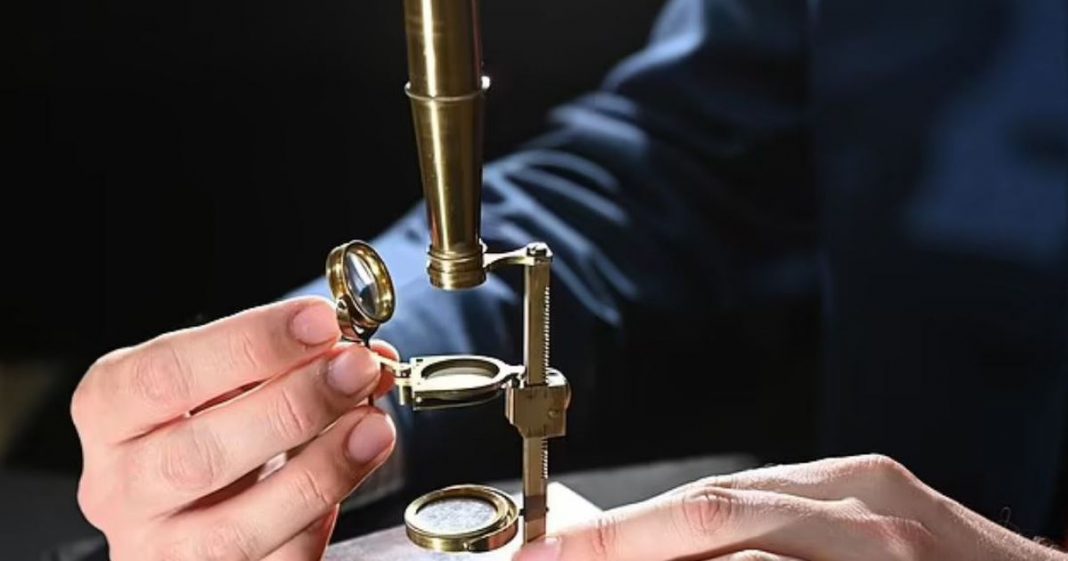How valuable was the microscope that Charles Darwin himself used to study animal plants such as corals, sea anemones and sponges from the Firth of Forth? Almost 500 thousand dollars.
An evolutionary father’s microscope, which has been in his family’s hands for 200 years, will be auctioned in December and is estimated to fetch $482,930.
The scientific machine, originally gifted to Charles Leonard’s son, was designed by English microscope maker Charles Gould for the Cary Company in 1825, reports daily Mail In a report posted on its website.
It is one of six surviving known microscopes associated with the British naturalist and most likely used to study animal plants such as corals, sea anemones and Firth of Forth sponges, by the year of manufacture and because the other microscope known he had at the time was not useful to him in these investigations.
The machine goes in and is assembled in a mahogany case, and passed on by Leonard Darwin to his older nephew, Edward Leonard Darwin. It will be auctioned off at Christie’s Auctioneers for Valuable Books and Manuscripts on December 15, 2021.
[ Los resultados de los ejercicios pueden variar drásticamente de acuerdo a los genes de cada persona, asegura estudio ]
Microscope nearly 200 years old, $500,000
Four years passed until exactly two centuries had passed since the manufacture of this microscope, which was made in 1825 for the studies of Charles Darwin and generations of his family passed until it was announced that it was auctioned.
James Hislop, director of Christie’s Division of Scientific Instruments, Globe and Natural History, stated:It is incredibly scary to look through this and see the microscopic world that Darwin had seen in the 1820s and 1830s. An instrument of this scientific importance is incredibly rare, it is the only Darwin microscope ever offered at auction.“.
“Charles Darwin is one of the greatest names in the history of science, and the Darwinian collectors (items related to Darwin) are already international in their scope.Hyslop has been added.
The importance of the microscope
Darwin’s study of animal plants was done with the help of this microscope and began in 1826 when he was trying to avoid his medical studies at the University of Edinburgh. He presented his research as his first scholarly article to the University’s Plinian Society in 1827.
The work contributed to the radical reinterpretation of the animal kingdom by British zoologist Robert Edmund Grant, postulating that seemingly simple organisms such as animal plants were at the beginning of a natural system that gave rise to humans.
Darwin later adopted the idea of ”first” creatures in the crucial period of his study during the second voyage of the survey ship HMS Beagle, which circled the globe between 1831 and 1836 and beyond. The naturalist published his pioneering work, The Origin of Species, in 1859.
During his voyage on the HMS Beagle, Darwin is known to have used one of the other microscopes now preserved in his former residence, Down House in Down. Other instruments preserved there include a second Curry microscope and a small vegetative microscope.
Darwin’s last two microscopes were the large Smith and Beck microscope now mounted in the collections of the Whipple Museum in Cambridge, and a prototype of a modified water microscope developed by Darwin himself, then produced by Smith and Beck in the 1920s.

“Web specialist. Freelance coffee advocate. Reader. Subtly charming pop culture expert.”




